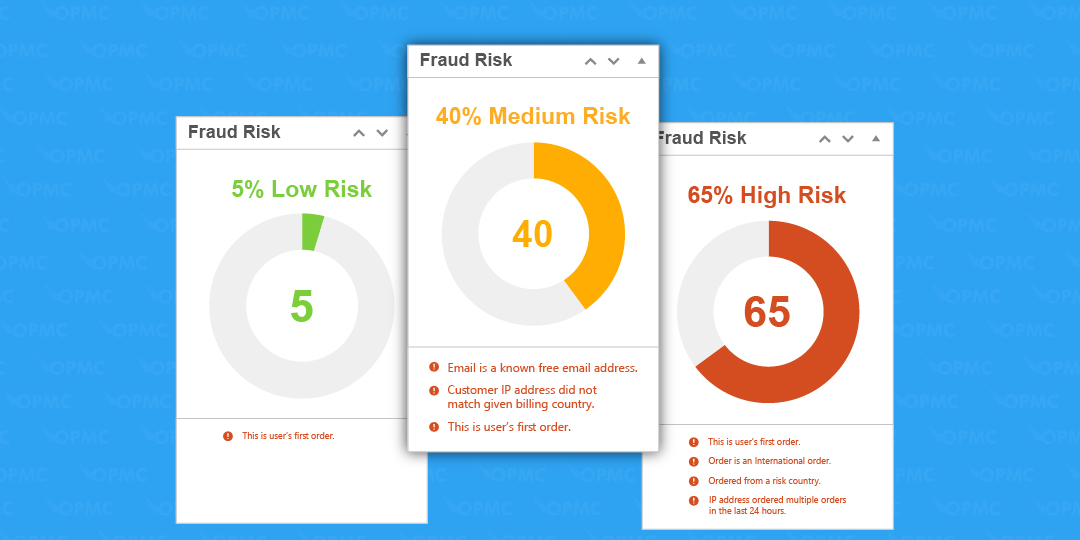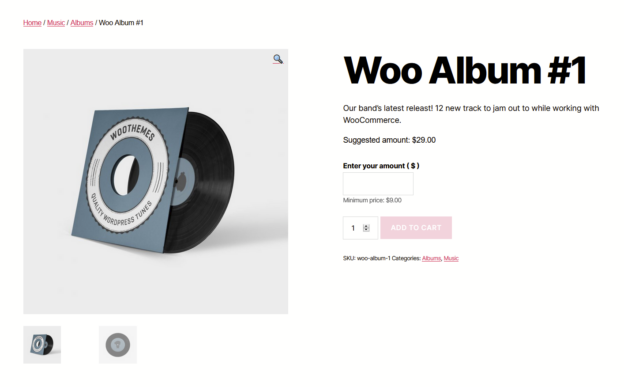WPC Price by Quantity for WooCommerce pro
1.213.730₫ Giá gốc là: 1.213.730₫.242.746₫Giá hiện tại là: 242.746₫.
Description
Encouraging customers to purchase more and increase their order value is not an easy task though store owners have a variety of methods to do so. Offering quantity based prices would be one of the most effective and powerful methods to urge buyers with very few convincing actions needed.
Live demo
Visit our live demo here to see how this plugin works.
Quantity-based pricing can be categorized into 2 types: volume pricing and tiered pricing. Volume pricing can benefit manufacturers and wholesale companies the most as it encourages customers to purchase more items to enjoy a lower average price. However, WPC Price by Quantity for WooCommerce is not just about discounts, it’s an advanced tiered pricing tool at the same time. Store owners can set up different tiers of pricing, in which they can raise the price or lower it for the next tier. The total will be calculated based on the sum of all applicable tier subtotals. Furthermore, these pricings can be assigned to a specific group of users based on the user role on the site. That said, wholesalers can enjoy a much lower price set than retailers or customers.
This plugin allows store owners to set up various pricing options in a table layout based on different levels of quantity. It’s super easy to configure and users can enjoy a real-time demonstration as the indicator will slide to show the active unit price corresponding to the current quantity level in the frontend. By nature, this plugin facilitates both volume pricing & tiered pricing – the two best strategies in marketing that encourages customers to upgrade their order size by increasing the quantity of products while sellers can have a better profit without the need to tighten their budget too much.
Outstanding Benefits
- Encourage customers to increase their order value
- Set up discounts in bulk for different user roles
- Support a broad range of customers at a time
- Increase revenue based on high-volume sales
- Facilitate the cumulative tiered price calculation
Key Features
- Two modes: Global or Individual Pricing (Premium)
- Two pricing methods: Volume pricing or Tiered pricing
- Price format: a number for fixed price or a percentage of the main price
- Disable and overwriting pricing rules on individual products
- Customize the position of price table on single product page
- Customize the color and background color of active price row
- Real-time display of active prices based on the quantity chosen
- Show saved amount or percentage after the price
- Customize the After text to show the benefits in each quantity level
- Role-based pricing for administrator, editors, customers, shop managers, etc.
- Work with all types of products, even Smart bundles/grouped/composite
- Work with custom add-ons from WPC Product Options
- Compatible with most common WordPress themes and WooCommerce plugins
Volume Pricing vs Tiered Pricing
WPC Price by Quantity offers two kinds of pricing: Volume Pricing & Tiered Pricing. These are very different ways of calculating the total based on quantity-based unit prices.
Volume pricing: one unit price corresponding to each quantity level will be used.
Tiered pricing: multiple unit prices of all tiers corresponding to the quantity level will be calculated into the total.
For example, with the following pricing table:
- Main product price: $10
- Quantity level 1: 3 >> price: 95%
- Quantity level 2: 5 >> price: 90%
- Quantity level 3: 10 >> price: $5
With the volume pricing method, if customers choose 20 for the quantity, it corresponds to quantity level 3, so the total will be: 20 x $5 = $100.
With the tiered pricing method, if the quantity is 20, the total will be calculated as: first 3 items x (95% of $10) + next 5 items x (90% of $10) + the last 12 items x $5 = 3 x 9.5 + 5 x 9 + 12 x 5 = $133.5 (higher cumulative total).
So the tiered pricing method always yields a higher total compared to the same unit prices used for the volume pricing because it doesn’t apply a unit price flatly for all items. Using tiered pricing is like building a multi-floor house while each floor is a pricing tier. Store owners can choose whichever method they like to apply for the pricing.
Global Pricing vs Individual Pricing
Users can easily set up global pricing tables for different user roles under WPClever >> Price by Quantity. These pricing tables will apply to all products storewide. That’s why they are called Global pricing tables.
It’s possible to disable or overwrite these tables at product level in the Premium version of this plugin. Users can set up specific sets of pricings based on various roles for individual products in the Price by Quantity tab under Product Data section of single product pages.
Both Global pricing and Individual pricing sets can be assigned to different user groups based on their role on the site. So each product can even have different pricing methods assigned to various user roles.
Interactive Pricing Table
The goal of quantity-based pricing is to encourage customers to upgrade to a higher level of quantity shown in the table, hence expanding their order size and obtaining higher discounts. By presenting all unit prices based on the increasing levels of quantity, customers will know better about how much they can save for the order.
The real-time indicator will let customers know which unit price will be applied to the quantity chosen. When customers are about to reach a quantity level, they tend to upgrade to the next one if the discount is irresistible to them. This results in a higher and bigger order than their initial intention. Sometimes, buyers are joining together to qualify for the quantity-based discount and this also benefits the sellers in the way that they will save time on managing and processing orders.
The After text for each quantity level and unit price notify customers of how much they can save if they increase the quantity for their order. Or this line can be utilized to provide additional information about the measurement unit or tax rate. Users can use default text or enter an alternative phrase for each line easily. In tiered pricing, there will be an extra column to break down the quantity chosen to correspond with each tier and the subtotal for each tier is shown to build the final total in a precise way.
Practical Use of Quantity-based Pricing
In order to adjust the price, simply enter a number to set up a new price or enter a percentage (a percentage of the main product’s price) in each box corresponding to each quantity level. It’s all about adjusting the unit prices based on quantity, so it’s applicable to lower or raise the price by an amount or a percentage. That is to say, WPC Price by Quantity isn’t about discount purely, there are cases when the price increases upon the increase of quantity.
When there are thresholds for discounted products, let’s say, only 300 units of items can be sold and only 2 at maximum per customer, then shop owners can increase the price for quantity level of 3 units to prevent customers from purchasing more than allowed. This will ensure more customers can enjoy the discounts.
Specific examples of quantity-based pricing:
- With each 10 units of items, customers can get a leveling 5% off the price (volume pricing).
- Customers get 10% off for 20 items, 20% off for 20 to 29 items, starting from 30 items, the flat unit price is $5 each (volume pricing).
- Clients who buy digital storage from a hosting provider will be charged $20 for the first 2 GB storage they use, $35 for the next 3-9 GB and starting from 10 GB tier, the price will be $40 for each extra gigabyte they use (tiered pricing).
- Customers who buy an electric stove must pay 100% ($100) for the first item, if they buy 2 at a time, the price will be dropped to 90% for the second stove ($100 + $90 for 2 stoves) and it will be just $78 for the third stove ($100 + $90 + $78). To limit customers to buy 3 stoves at max for each order, the price will be back to $100 (100%) from 4 as the highest quantity tier (tiered pricing).
- Shop managers can purchase at a price that is always 5% lower for all quantity levels compared to customers for the same products (pricings based on user roles).
Need more features?
Please try other plugins from us:
1. Bấm Đăng nhập/đăng ký.
2. Điền thông tin email, mật khẩu đã mua hàng -> bấm Đăng nhập.
3. Di chuột đến mục Tài khoản -> Đơn hàng -> bấm vào Xem ở đơn hàng đã mua.
4. Đơn hàng hiển thị tình trạng Đã hoàn thành -> bấm vào Download để tải sản phẩm về.
1. Bấm Thêm vào giỏ hàng -> bảng thông tin giỏ hàng sẽ hiển thị góc trên bên phải.
2. Bấm Thanh toán.
3. Điền thông tin thanh toán gồm: tên, email, mật khẩu.
4. Chọn phương thức thanh toán có hỗ trợ gồm: Chuyển khoản ngân hàng (quét mã QR), quét mã Momo, quét mã Viettelpay, Paypal.
5. Bấm Đặt hàng để tiếp tục.
5. Thanh toán bằng cách quét mã QR (Nội dung chuyển khoản và số tiền sẽ tự động được tạo), hoặc chuyển khoản nhập số tiền và nội dung chuyển khoản như hướng dẫn.
6. Sau khi thanh toán xong đơn hàng sẽ được chúng tôi xác nhận đã hoàn thành và bạn có thể vào mục Đơn hàng để tải sản phẩm đã mua về.
Sản phẩm tương tự
Plugin khác
Plugin khác
Plugin khác
Plugin khác
Plugin khác
Plugin khác
Plugin khác

















